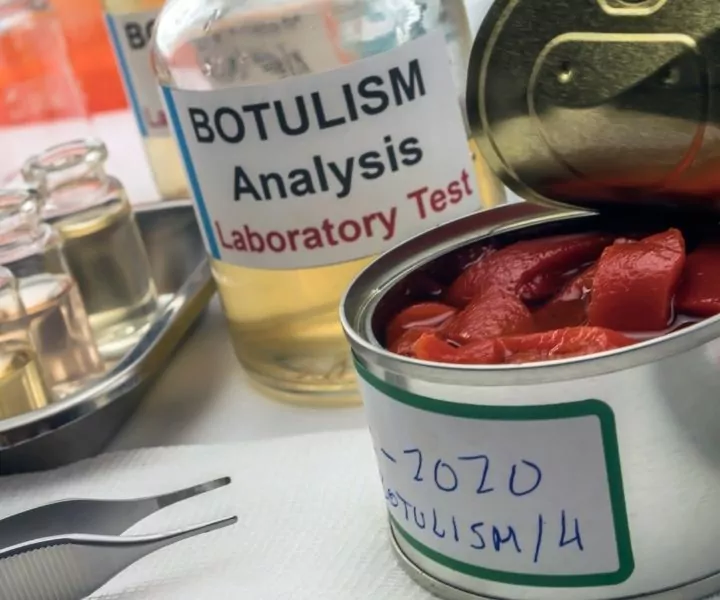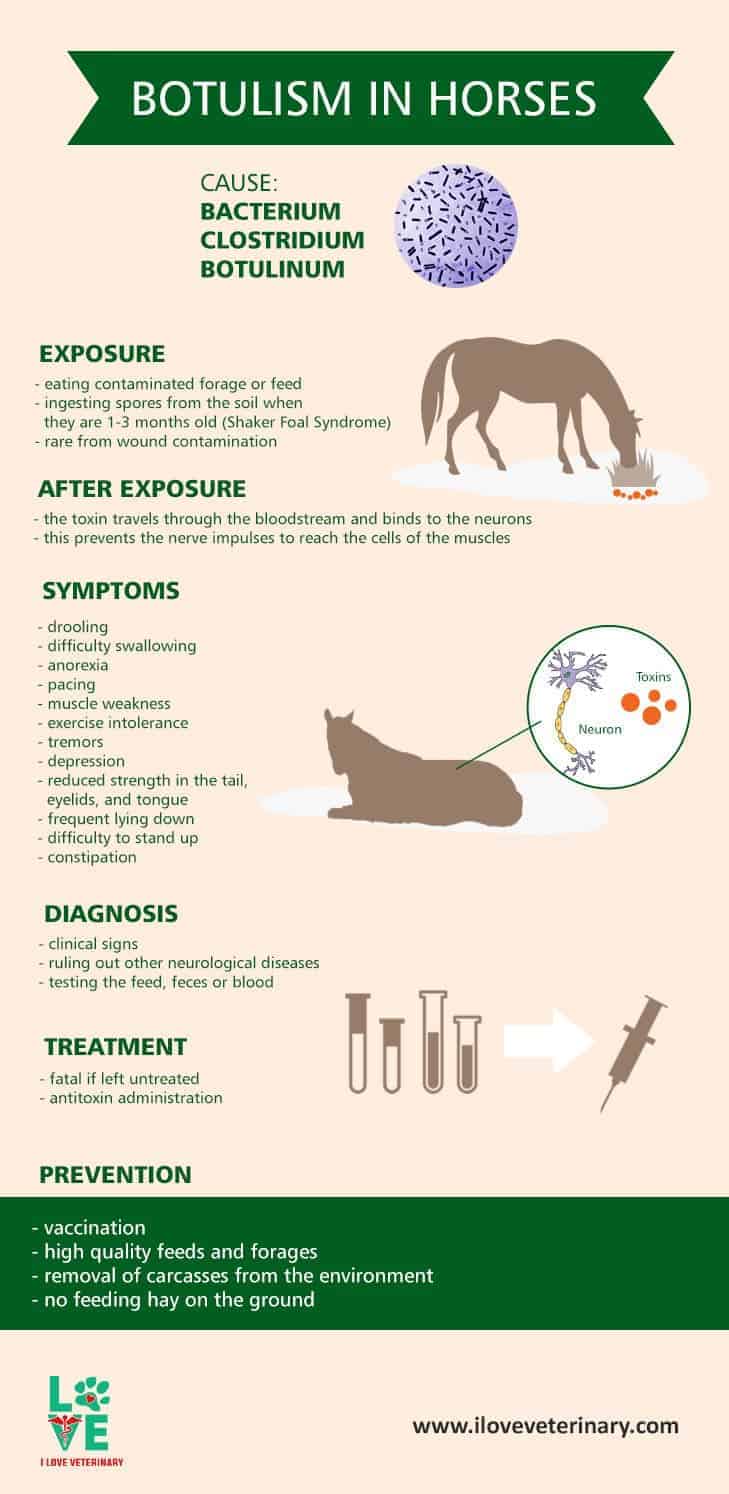What is Botulism in Horses?
Botulism in horses is caused by a toxin produced by the Clostridium botulinum bacterium. It is a rare and potentially fatal illness. In horses, signs of muscle weakness, sometimes paralysis appear as a result of the infection. Usually, horses have muscle tremors as well.
Botulism in horses is a serious illness that affects the equine nervous system and can lead to paralysis, respiratory compromise, strangles-like symptoms, blindness, and death.

It can be contracted through contaminated food or water or ingestion of feed that has been contaminated with feces from an infected animal.
Clinical Signs of Equine Botulism
Low oxygen levels, like those found in damp hay or silage, inhibit the germination of the spores (which are the primary transmission vehicle) and therefore reduce or prevents colonization.
Ileus (abdominal pain) is classically noted in horses with botulism, but not all will experience this symptom. Other clinical signs include:
- Excessive drooling (ptyalism) which may be due to paralysis of the tongue.
- Central ataxia, in which the head is held high with straight-up ears.
- Weakness in the limbs (especially ataxia) and muscles.
- Respiratory difficulty (difficulty breathing or not breathing).
- Vomiting (sometimes due to paralysis of the gut).
Foods rich in thiamine (vitamin B1) are thought to be protective against infection, but they may not be enough on their own to prevent or inhibit botulism. Reduced activity is not a sign of infection.
If your horse is active and moving around normally, this does not mean that he is infected. It can be an early sign of anthrax, mycoplasma, or tetanus.
The Two Main Disease Agents of Botulism in Horses
The two main diseases agents are Clostridium botulinum which produces the toxin that gives them their name, and Clostridium tetani only producing the toxin only when it is in anaerobic conditions (extremely low oxygen levels).
Clostridium botulinum spores produce a neurotoxin that affects the nerves of the body and causes tetanus-like disease. The spores can be carried in the feces of susceptible horses, and if contaminated food is ingested by other horses the spores can cause disease. Anthrax and mycoplasma can also cause botulism.
The Causes of Equine Botulism
As an equine veterinarian, I’ve always been fascinated with what horses are capable of, but there is one part of the horse that seems to confound me. That part is the gastrointestinal tract.
The way a horse processes his food, and the strong ties that exist between the digestive process and a horse’s breathing can result in an unfortunate situation called botulism. Botulism is a nerve toxin that is found in improperly processed food.
When the bacteria Clostridium botulinum is present in meat, especially undercooked meats, it can produce a deadly neurotoxin. The toxin does not come from the bacteria itself, but rather the toxins it produces when it’s eaten.
The toxins bind to specific receptors on nerve cells and ultimately damage them. Nerve cells are responsible for controlling muscle movement and are responsible for the automatic breathing process of your respiratory system.
The causes of botulism are a neurotoxin produced by a fungus known as Clostridium botulinum. These spores are found both in soil and water, with horses drinking from contaminated ponds or streams, ingesting affected feed (hay, grain), or even ingesting the fungus directly.
Clostridium botulinum exists in two forms, A and B, with only C. botulinum type B being responsible for causing botulism. Among horses, there are two strains labeled types A and B. Botulism is commonly seen in foals less than six months old, but adults are also susceptible to the toxin.
After ingestion, the spores grow into vegetative cells which produce a toxin that is then released into the digestive system.

